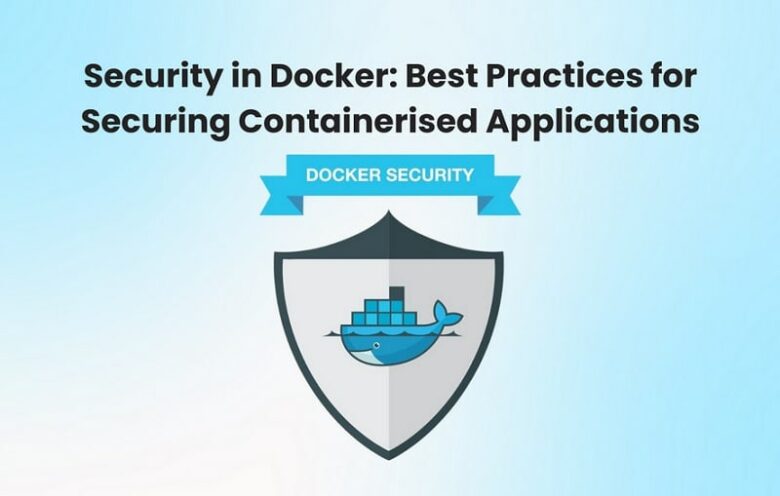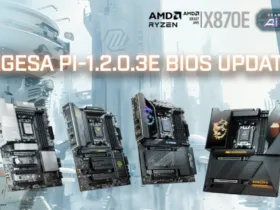When it comes to DevOps, where speed and flexibility are king, containerisation technology is now a must-have. Developers may package software and their dependencies into tiny, lightweight containers using Docker, the industry-leading platform for containerisation. Scalability, deployment methods, and communication between operations and development teams have all been greatly enhanced by this revolution.
With more and more professionals taking a DevOps Course, it’s more important than ever to understand “What is Docker” and how to make it more secure. In this blog, we will go over the recommended practices for security, including managing secrets and container runtime security, to ensure your containerised programs are secure.
Table of Contents
- Understanding Docker Security Risks
- Docker Security Best Practices
- Update Regularly
- Minimise Container Privileges
- Implement Image Scanning
- Utilise Docker Bench Security
- Network Segmentation
- Enforce Resource Limits
- Enable Content Trust
- Regularly Audit and Monitor
- Container Runtime Security
- Secrets Management
- Conclusion
Understanding Docker Security Risks
Understanding the possible security issues related to Docker containers is crucial before diving into recommended practices. Because containers use the same kernel, the isolation they provide may not be 100% reliable. When improperly set up and maintained, containers might reveal security flaws and jeopardise the system’s overall security. We help trainees understand container security by highlighting the need for a proactive security strategy.
Docker Security Best Practices
Update Regularly
Updating and being vigilant is essential to every system’s security, and Docker is no different. By keeping Docker and its dependencies up to date, you can ensure that your containerised apps are protected against known vulnerabilities by applying the most recent security updates. One of the most important things you should learn from any thorough DevOps education is how to integrate this approach into your pipeline.
Minimise Container Privileges
While determining container permissions, adhere to the least privilege concept. Keep user rights in the container to a minimum—only those required to run the program. Doing this reduces the risk of a security compromise and exposes fewer vital system resources. A thorough knowledge of these concepts is taught in a comprehensive DevOps course.
Implement Image Scanning
One essential step in protecting Docker containers is image scanning. Use programs that look for known vulnerabilities in container images automatically. By including this procedure in your CI/CD pipeline, you may improve the overall resilience of your applications by ensuring that only compliant and secure images are released into production.
Utilise Docker Bench Security
An open-source Docker Bench Security tool is designed to evaluate your Docker container parameters compared to suggested best practices. Periodically running this script gives you insights into possible security flaws, enabling quick fixes. It’s a good idea to include Docker Bench Security in your toolbox.
Network Segmentation
Network segmentation is an effective way to improve security for containers. Threats may move less laterally when containers are isolated onto separate network parts. By adding an extra layer of defence, this technique lowers the attack surface and lessens the effects of security breaches.
Enforce Resource Limits
Resource depletion attacks must be avoided by imposing resource restrictions on containers. You may prevent a single container from monopolising resources and preserve the stability and performance of the whole system by specifying resource limitations, such as CPU and memory limits.
Enable Content Trust
By turning on content trust, you can ensure that your Docker hosts only retrieve and execute signed and validated images. Deploying hacked or modified pictures is less likely, thanks to this cryptographic signature verification, which provides an additional layer of assurance about the authenticity and integrity of container images.
Regularly Audit and Monitor
Routine audits and monitoring of Docker environments obtain real-time insights into possible security events. Make use of monitoring tools to keep tabs on container behaviour, spot irregularities, and react quickly to any questionable activity. A strong security plan is built on this proactive approach.
Container Runtime Security
Container runtime security is an essential component of Docker security. Its main goal is to protect the runtime environment and guarantee that containers are executed securely. This includes strengthening Dockerised apps against possible risks by customising and monitoring runtime security settings to stop exploits and unauthorised access.
Secrets Management
Efficient secret management is another essential component of Docker security. Applications often need sensitive data, such as API keys or passwords; thus, managing and storing these secrets securely is necessary. DevOps training covers the foundations of Docker and dives into robust secrets management techniques, giving professionals the tools they need to safeguard confidential data in containerised systems. Using external vaults or solutions like Docker Secret may minimise the risk of data breaches and illegal access while maintaining the security of sensitive information.
Conclusion
Knowing the subtleties of Docker security is essential for DevOps. It is now strategically necessary for professionals to embrace security best practices and understand “what is Docker” when enrolling in DevOps training. Because of its revolutionary powers, Docker needs a proactive, comprehensive security strategy. A strong security posture requires regular updates, careful permission control, image inspection, and tools like Docker Bench Security.
Using Docker to secure containerised apps is an ongoing activity rather than a one-time effort. You can increase the resilience of your infrastructure and protect your apps from changing threats by incorporating these best practices into your DevOps operations. Maintaining awareness and being proactive with Docker security is an investment in the dependability and durability of your containerised apps as the DevOps environment changes.














Leave a Reply